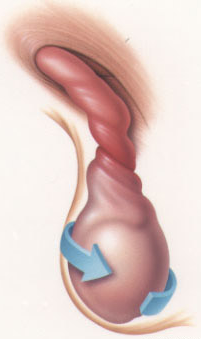Scientific Editor: Editorial Board ISUD website
What is Reduction of Testicular Torsion?
Reduction of Testicular Torsion is the procedure to restore the rotation of the testis and its blood supply. This procedure can be done manually (without opening the scrotum),, but in most cases it requires surgical reduction by intervening into the scrotum.
When is it performed?
Testicular torsion is an emergency and must be treated immediately. If the reduction is performed 6 hours after the onset of sudden pain, there is high risk of testicular necrosis.
What preparation is required?
If classified as an emergency surgery, the preparation required is, in most cases, elementary and includes basic preoperative assessment. In patients with chronic diseases such as diabetes mellitus, thyroid disease and others, the physician must ensure that surgery will be done at the right time and under the best conditions in terms of patient safety.
What happens during the surgery?
The procedure is usually performed under general and, more rarely, spinal anesthesia. During surgery, the scrotum is opened and the testis is reduced, if it is still considered to be viable. Then the testis is fixed with a suture to the scrotum, in order not to twist again. In some cases, to avoid twisting of the other testis, it will be fixed to the scrotum during the same surgical session or during another surgery that will take place later on.
What about after surgery
Upon discharge from hospital, you will receive specific instructions about:
- when it is safe to start vigorous physical activity and return to work
- what antibiotics to receive postoperatively
- what sort of postoperative wound care is needed
- If there are non-absorbable sutures, they should be removed in seven to ten days after surgery.
What is the impact of the intervention on patient's life?
The surgery itself has no impact on the patient's life. However, if the torsion is neglected, then there is a risk of infertility. In this case, it is recommended to proceed to sperm cryopreservation and regular semi-annual follow-up of the patient with semen analysis, so that the Urologist makes sure that the patient’s fertility has not been affected (1-2 years). The same follow-up is also applied to the man who had the testis removed because of testicular necrosis.



